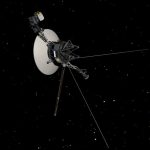Key Takeaways:
- Scientists from the Perimeter Institute propose a groundbreaking theory about what might have occurred before the Big Bang.
- This theory is based on sound mathematics, challenging conventional ideas about the birth of our universe.
- The Big Bang may be a three-dimensional illusion caused by the collapse of a star in a vastly different universe.
- Instead of originating from a singularity, our universe might have formed outside the event horizon of a four-dimensional black hole.
- The theory leverages holography to transform the Big Bang into a cosmic mirage, offering testable predictions.
The quest to comprehend the origin of our universe has long puzzled cosmologists. The prevailing theory, the Big Bang, suggests an explosive genesis from a singularity, a point of infinite density. Yet, this concept raises profound questions about the nature of the singularity itself. Could there be an alternative explanation?
A team of researchers from the Perimeter Institute has proposed a radical idea that challenges the established narrative. They posit that our universe might be the manifestation of a collapsing star in a higher-dimensional realm. This theory, which earned the cover story in Scientific American titled “The Black Hole at the Beginning of Time,” hinges on the notion of a four-dimensional black hole giving rise to our three-dimensional universe.
Conventional wisdom contends that the Big Bang emerged from a singularity, a realm where the known laws of physics unravel. This notion, however, stretches the boundaries of our understanding. The researchers argue that it’s improbable for our orderly and comprehensible universe to spring forth from such a chaotic and incomprehensible source.
Their proposal introduces a fascinating twist: our universe is akin to a three-dimensional “shell” enveloping the event horizon of a four-dimensional black hole. Unlike in our familiar three-dimensional universe, where black holes possess two-dimensional event horizons, this higher-dimensional black hole’s event horizon would be three-dimensional.
According to this framework, our universe was never within the singularity; rather, it emerged beyond the event horizon, shielded from the chaos within. It materialized as a single element within the remnants of a collapsed four-dimensional star. The researchers ground their idea in cutting-edge mathematics, leveraging holography to transform the Big Bang from a singular point of origin into a cosmic illusion. This approach not only addresses longstanding cosmological enigmas but also yields predictions that can be tested by scientists.
While the notion may seem perplexing, it urges us to transcend our familiar three-dimensional perspective. Human intuition, shaped by a three-dimensional world, might only reveal partial truths about reality. The researchers draw a compelling parallel to Plato’s allegory of the cave, where prisoners perceive only shadows on a wall, ignorant of the broader reality. Similarly, they suggest that our comprehension of the universe might be limited by our confinement to three dimensions.
In essence, this theory challenges us to consider a universe that transcends our conventional understanding, potentially heralding a paradigm shift in cosmology. It prompts us to venture beyond the boundaries of our intuitive grasp and seek answers in the uncharted realms of higher dimensions.


